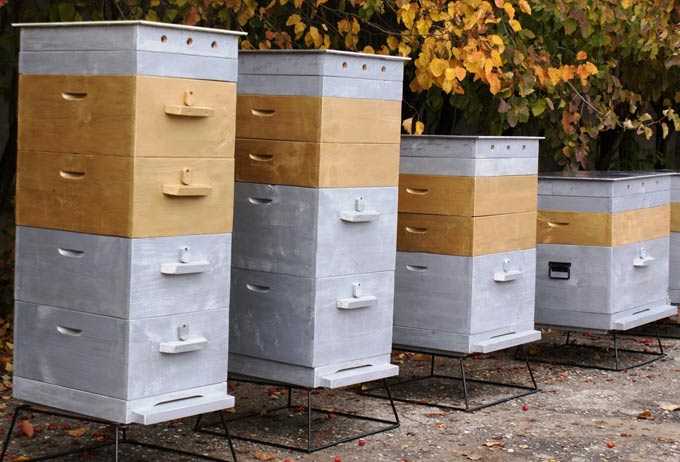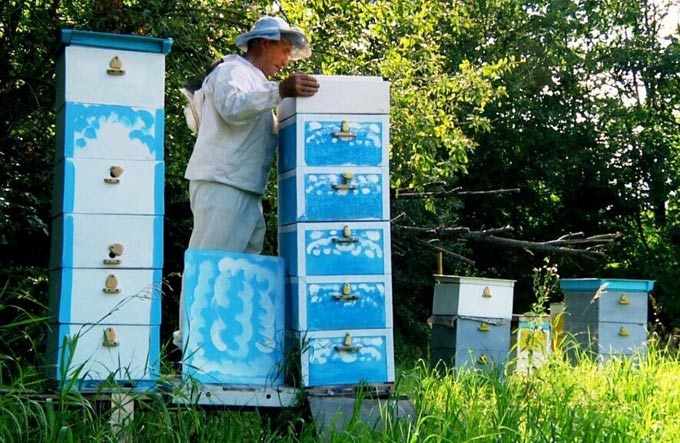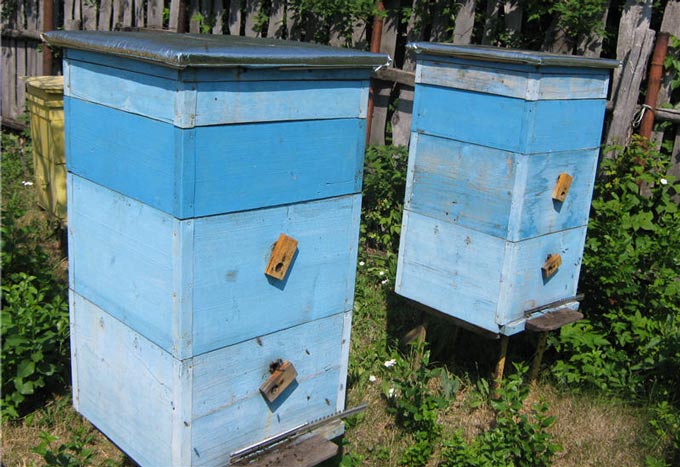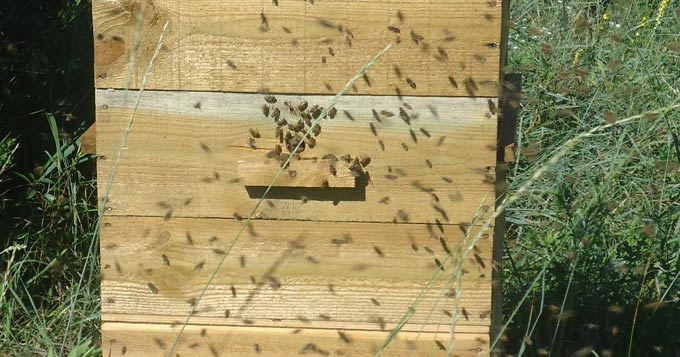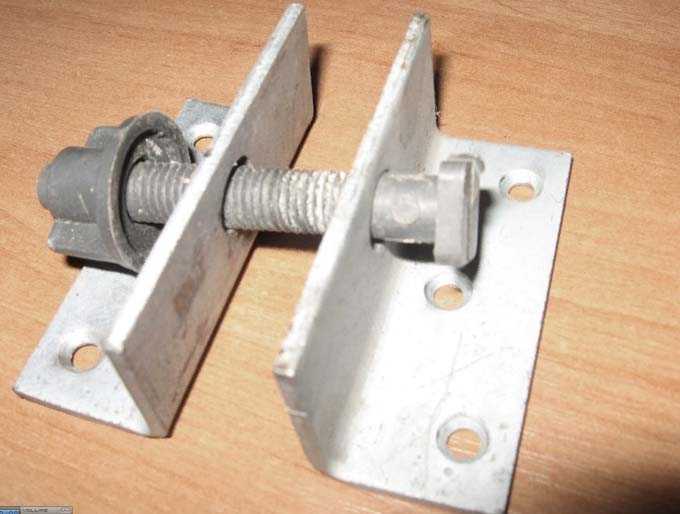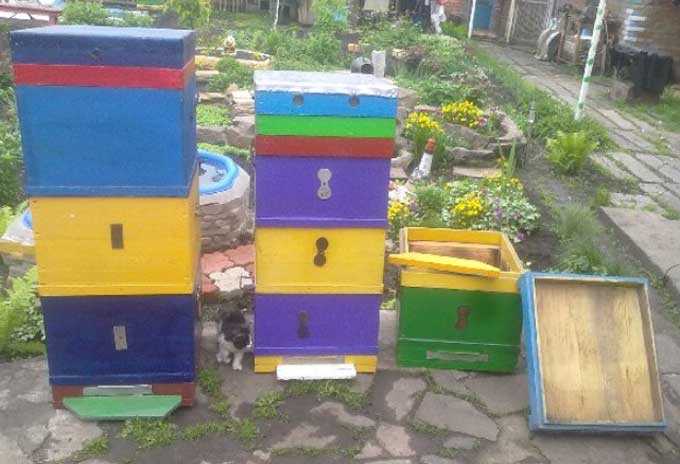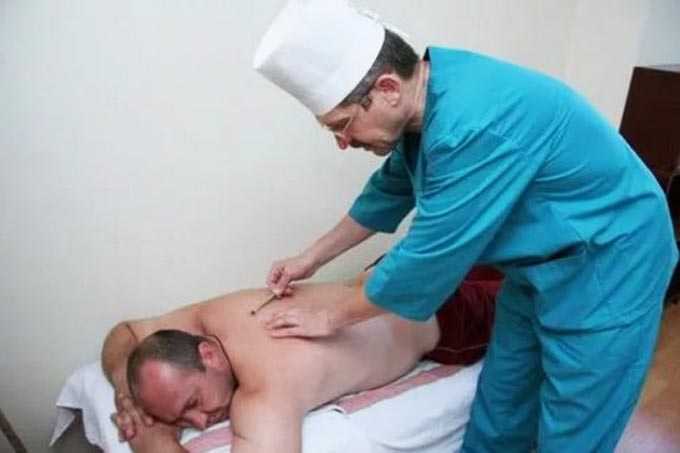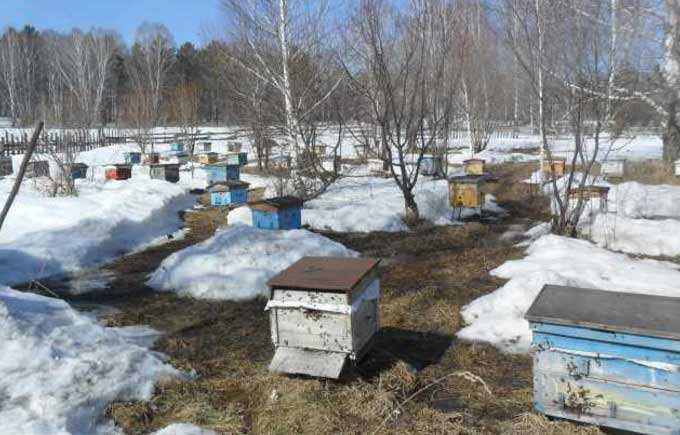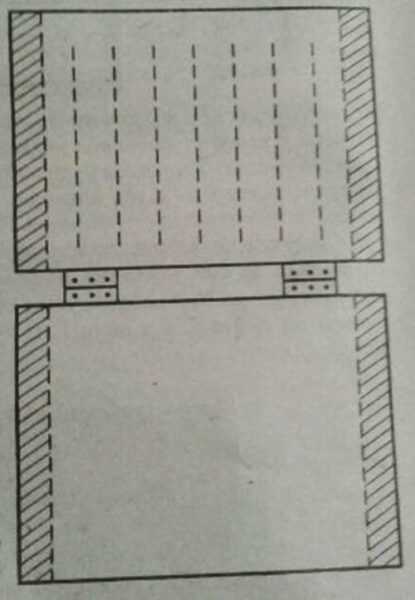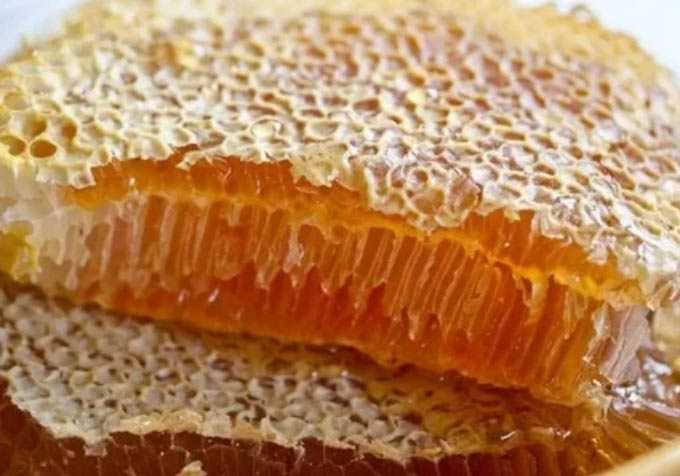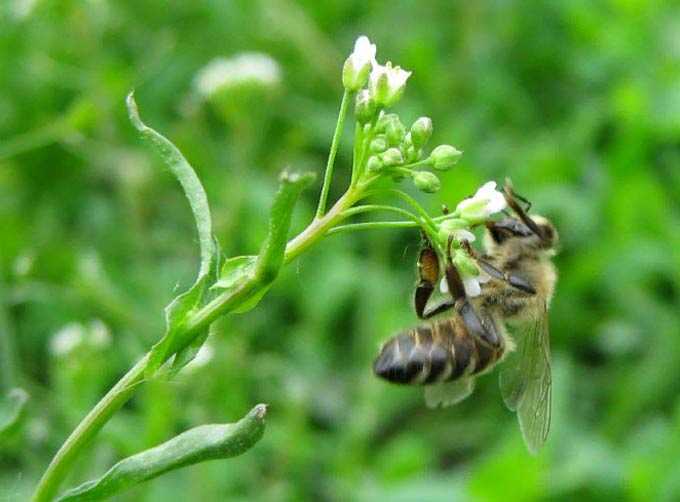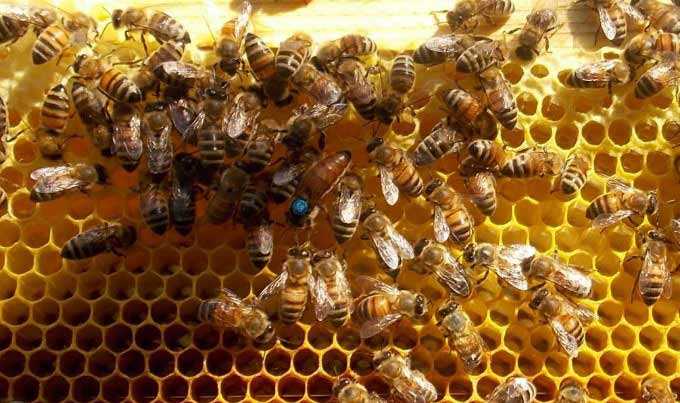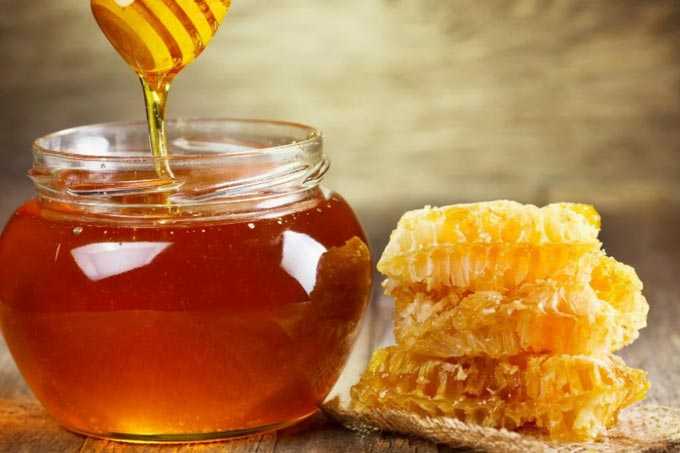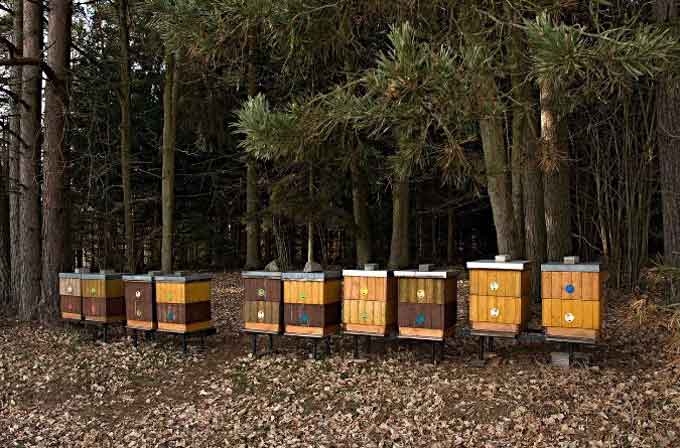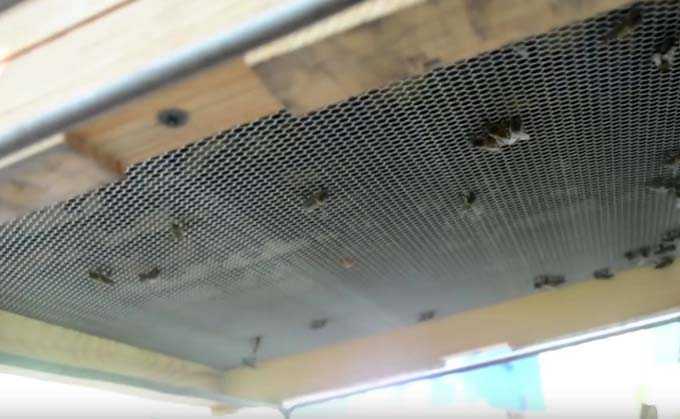Comparison of which hive is better than Dadan or Ruta is subjective, since any of the listed structures has its own advantages and disadvantages.
It is also important to take into account the tasks that the beekeeper sets himself – amateur maintenance or production of honey on an industrial scale.
The content of the article
- 1 History of use
- 2 Important points for a 10-frame system
- 2.1 Pros of the 10-frame system
- 3 Important points for a 12-frame system
- 4 Features of the complete set
- 5 In conclusion
History of use
Twelve-frame hives were a breakthrough in beekeeping at one time – they replaced 16- and 24-frame loungers. The content of bees in such a house will be multi-hull in nature, since the development of nests occurs from the bottom up.
The next stage in the modernization of the beekeeping industry was the introduction of hives assembled according to the improved drawings of the American Langstroth. This design is known as the Langstroth-Ruth hive or the Ruth multihull hive.
The development of bee colonies here also takes place from the bottom up. But the nest is assembled from only ten honeycomb frames. The same amount is found in all installed enclosures. Shop extensions, in contrast to the twelve-frame Dadan-Blatt design, are practically not used (some beekeepers practice installing extensions during periods of abundant honey collection).
Multi-hull root hives are widespread all over the world today, as a design contributing to the introduction and development of industrial production in the beekeeping industry.
But historically it happened that twelve-frame Dadanov hives were mass-produced on the territory of the Soviet Union. For this reason, they took root with us and even became popular. In the countries of the near abroad, today you can find different variations of Dadan’s bee houses. Beekeepers of the old school, accustomed to Dadans since Soviet times, actively advocate for them.
Important points for a 10-frame system
Textbooks and numerous encyclopedias containing articles and quotes from the works of domestic supporters of the Dadanov hives contribute to the spread of the myth about the unsuitability of the multi-body 10-frame design for the Russian climate.
The disadvantages that are dubious from our point of view are attributed to:
- less collection of honey (and they write about this with the proviso “sometimes”);
- frequent falling of bee colonies into a swarm mood;
- indispensable work in the apiary with a partner (we know examples when single beekeepers successfully cope with the task of maintaining bee houses).
The most controversial statement is the movement of the bee club exclusively upward during wintering. How, then, do families survive in sun loungers?
All the disadvantages listed in the books force young beekeepers to abandon the profitable multi-hull housing system. This means that the possibility of using high-performance industrial technology for the care of bee colonies is excluded.
After all, it is well known that in Rut’s hives, the beekeeper operates with whole bodies, and not just frames. He can inspect more nests at a time – more bee houses are installed at one point, since they are easier to manage.
Separately, I would like to point out a defect in the standard design of Ruth, produced under the number 808-5-1. It is necessary to reduce the height of each body by 7 millimeters. The design erroneously indicates 250 mm, which gives 15 mm of clearance between the upper and lower frames in the nest. Reducing the gap will eliminate the need to tear the bodies apart in the summer, because in the extra space insects willingly pull the honeycombs, gluing the frames.
Wintering should take place indoors, even during relatively mild Russian winters. A ground, non-insulated (not deepened into the ground) room saves the bee colonies from winds and precipitation. As a result, fewer bees will die during the winter and the food will be more intact.
Another important aspect of wintering in rutovsky houses is the formation of a nest in only one, the lower building. Remains from 8 to 10 honeycomb frames, limited on both sides by thin diaphragms. Excess insects are pumped into the resulting empty space of the house.
For 10 cell frames of the nest, up to 15 kilograms of sugar should be given out in winter. Usually this amount is enough so as not to feed in the spring.
Pros of the 10-frame system
Let us dwell separately on the advantages of multi-hull ten-frame bee houses.
It:
- the ability to use more compact equipment (honey extractors, portable boxes);
- lightweight hulls (compared to dadans);
- universal sizes of honeycomb frames – there are no problems with the number of half frames, their separate storage;
- a good harvest of honey (subject to favorable weather conditions);
- the ability to maintain large and strong bee colonies, ensuring high productivity of the apiary;
- simplification and acceleration of all work with nests;
- the possibility of assembling nests before the entire brood emerges (when wintering in two buildings).
Note for beginners: Now it is extremely difficult to purchase bee packages on the rutovsky frames. Therefore, when purchasing houses of the Langstroth-Root design, be prepared to install a bee package using an empty housing from the bottom. Over time, Dadan’s frames can be trimmed or simply thrown away.
Important points for a 12-frame system
You can read about Dadant’s construction here:
12-frame Dadan
Dadant hives for 10 and 12 frames – which is better and why
Dadanovsky hive – features, advantages, manufacturing
And in this article we will touch upon only some of the features of the design and maintenance of bee colonies.
To reduce the weight, “summer” cases and magazines can be mounted from boards 20-25 mm thick. But you should not use them for the lower nest housing, since they are on the street all the time and wear out faster. A 35 mm board is recommended here.
On a note: the rutovsky hulls can be extended from the bottom with a board having a height of 70 mm, thereby obtaining a nesting Dadan section.
Dadan’s design is somewhat close to the technology of keeping in sun beds:
- in the spring, there is a standard expansion;
- after which dividing grids are installed (it is necessary to choose a manufacturer that produces flexible dividers with non-sharp edges that do not injure insects) – they do not affect the amount of honey, it all depends on the strength of the bee colonies;
- when expanding, you can immediately install a store extension (not a case!);
- shops allow you to accurately adjust the size of the house with intermittent bribes;
- it is as easy to assemble a nest here as in a lounger;
- and in the fall, the bee colonies do not need to be fed.
This completely suits the so-called weekend beekeepers who visit the apiaries 1-2 times a week.
Note: With abundant honey harvest, you can install up to 4-5 stores! With light bribes, 1-2 extensions are enough. The honeycombs in them will be filled completely in comparison with the body by 300 mm.
Related Videos:
Features of the complete set
Classic equipment:
- for Langstroth-Ruth – from three to five cases, accommodating a standard Ruta honeycomb frame with dimensions of 435 by 230;
- for Dadan-Blatt – a case that accommodates a standard Dadan soto-frame 435 by 300; one or two store extensions for the period of honey collection, designed for half frames 435 by 145, or one more building.
Interesting fact: In the original version of the drawing proposed by the authors, the Dadans were completed with only one extension.
In conclusion
There can be no unequivocal answer to the question of which hive is better – Dadanovsky or Ruta.
When choosing, we recommend paying attention to the following points:
- both containment systems are inherently multi-hull;
- Routes are preferred by beekeepers abroad, and Dadans are loved on the territory of the former USSR, and new things take root in our country badly – this is where most of the heated debates on the forums stems;
- there are certain difficulties with the purchase of bee packages for rutovsky houses (we proposed a solution to the problem above);
- replacing the hive system in the process of beekeeping is an expensive and time-consuming undertaking (it is better to decide on the choice immediately and finally!);
- with insufficient experience, difficulties may arise with reducing the nest in the fall in multi-hull houses (it is difficult to reduce to the volume of one hull);
- for beginners who do not plan to keep a large apiary, the classic sunbed is still the most ideal choice.
Once again, we draw your attention! There is no single universal solution – any hives need to be tested and decided whether to deal with the mass maintenance of bees in them (it is necessary to assess the climatic conditions, the peculiarities of the content of a particular breed, your own health).
